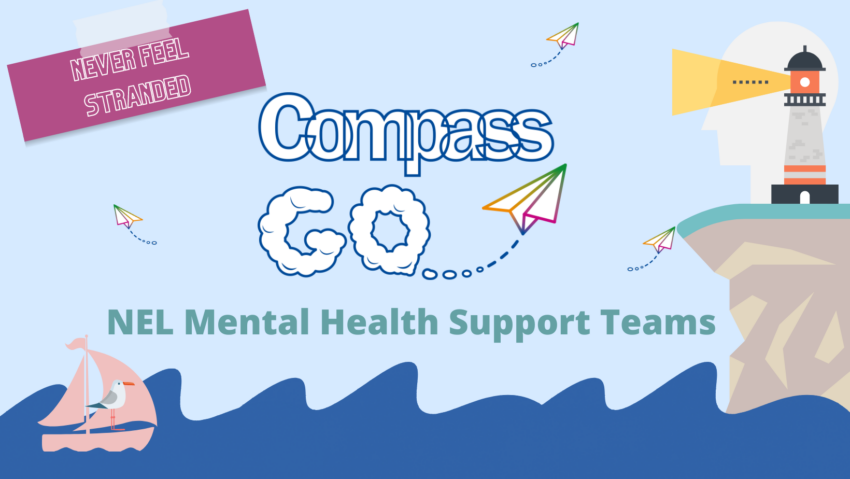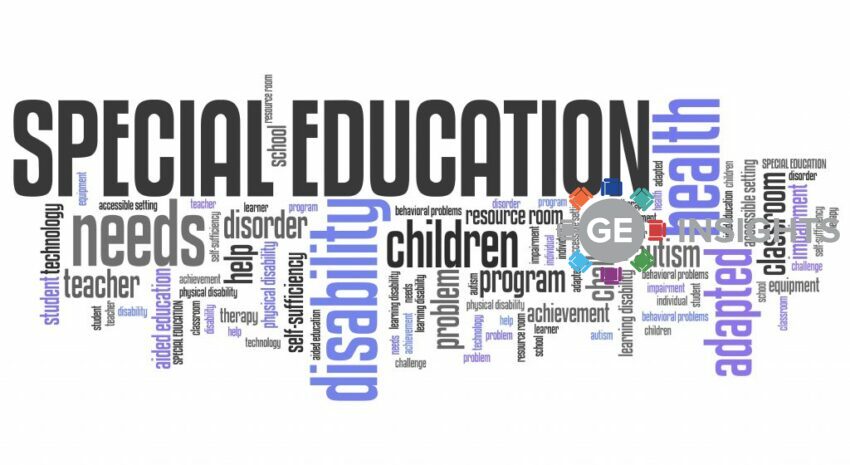
In February 2020, Compass…GO launched as North East Lincolnshire’s first Mental Health Support Team (MHST). The service was designed to work with children, young people, families, and educational settings in North East Lincolnshire. They provide support, help and advice for pupils, students and schools for issues related to emotional and mental health wellbeing. Compass GO… currently has full school coverage of the North East Lincolnshire borough. The service advocated for the ‘A Whole School Approach’ framework for educational settings which was set as the best course of action in ‘Transforming children and young people’s mental health provision: A green paper’ in 2017.
The Benefits of a Whole School Approach to Mental Health
A whole school approach has many key principles that focus on early help and the prevention of mental health conditions. Early identification and intervention along with pupil voice were the two principles that were the motivation behind Compass…GO commissioning an engagement and participation worker for their service, and their duties would be to focus on ways that the mental health support team could best facilitate the proactive actions on those two principles being implemented or reviewed in educational settings.
The engagement and participation worker created the ‘Peer Wellbeing Project’ which has designed to help children and young people learn about emotional wellbeing, mental health, participation, safety, and ways that they, as students, could help identify wellbeing concerns as well as having the power to also create solutions for these concerns alongside members of school staff. Each school and the participants who took part in this project had the freedom to adapt the project to fit their school’s environment and level of need. The project began rolling out across the borough at the beginning of March 2022. Over 350 children and young people have participated in the project since then.
Reviewing the Peer Wellbeing Project
In the November of 2021, a new member of staff was appointed to the role of the engagement and participation worker for Compass…GO. Their initial duties were to review the service’s recent engagement and participation work, and research other MHSTs and their approach. Using this data, they would then work with the service lead to determine the best approach to delivering participation work in our local area.
The initial review of the service’s recent approach to engagement and participation work showed the idea of eventually using The Anna Freud Centre’s ‘Peer Mentoring Programme’ resources which focuses predominantly on peer support, gathering feedback in focus groups within different local schools and then creating action plans based on the feedback.
In researching other MHSTs, and watching presentations from MHSTs around the country during the National Mental Health Support Teams Celebration Event 2021, there were a few testimonials from children who had taken part in similar peer mentoring/ambassador-style programmes, a lot of the feedback was based on the themes of “having someone to talk to who has been through something similar”, “it’s nice to know you’re not the only one going through this” and similar sentiments. The process appeared quite fast; the MHST would provide some training to a preselected group of pupils and then they would meet regularly to support each other. Other areas around England seemed to differ in approaches based on how much resource and time they had, varying from schools employing external services to deliver training to their students on peer support, to schools incorporating more resources on wellbeing to existing pupil collaboration projects such as a student council.
Developing a Peer Mentoring Programme
When working with the service lead for Compass…GO, the priority was to develop our own peer mentoring programme which has an emphasis on wellbeing education, supporting fellow pupils as well as school staff, participation projects and safety. The initial goal set for this project was to roll It out into 20 local schools within 6 months. We would measure the success and impact of the project by working closely with school staff and the supervising practitioner from Compass…GO who lead in advocating that school’s progress in adapting the ‘A Whole School Approach’ framework.
At Compass…GO, the team consists of:
- Service lead,
- Team leaders,
- Administrators,
- Marketing and communications Officer,
- Family practitioner,
- Qualified, trainee and assistant Education Mental Health Practitioners (EMHPs, TEMHPs, AEMHPs),
- Supervising Practitioners (SPs) and
- Engagement and participation worker
It was quickly established that for this project to be successful, engagement and participation had to become a core part of the service offer, meaning that the sole responsibility of the project could not be left to one person working alone on it. The decision was made to work closely with the team’s SPs on developing an understanding of the schools that each SP work within their designated localities. It will be essential to learn about the school’s current wellbeing concerns, how the project could target specific needs as well as building relationships with school staff and installing confidence in them to ensure the eventual self-sufficiency of the project.
Training in the Peer Wellbeing Project
A priority for the role of the engagement and participation worker is to target children and young people who are not currently accessing our service in order to both promote our service as well as delivering skills for maintaining positive wellbeing and mental health to children and young people; so that if they feel that they are in a challenging situation or mind frame, they will already be equipped with some skills to cope and manage. The project fits into the role as any child from the school (over the age of 5) will be able to access the project, and not only learn the skills but be able to contribute to their school culture where hopefully other pupils will hear about these coping skills without having to be part of the project or accessing the services.
When developing the training, the main focuses were to create a project that highlighted the ‘5 ways to wellbeing’ model, give the participants many chances to practice skills as they learn them, highlight safety within the role and ensure that the project resources as a whole pack are as adaptable as possible for different educational settings, as well as children with different communicational needs.
The project had to be measurable, so the first resources developed were the pre and post training questionnaires. They were designed simply to identify a baseline of knowledge for each participant on what they already knew about wellbeing, what they expected in the project and something they would like to learn about. The post-training questionnaire was designed to capture what each participant had learnt about during the training if they understood what was expected of them and what they would like to achieve during the project.


Resources Created for the Project
The next resource created for the project was the development of the training presentations. These presentations were designed to be prompts for not only the presenter of the training but also for the participants to have simplified key points about the different topics discussed in the training. There were 5 different training presentations created, one for participants in a mainstream primary school, one for participants in a mainstream secondary school, one for members of staff working in the schools where the project is being implemented, one for the members of the MHST team who will help implement the project into their different allocated schools, and one for other agencies such as commissioners, other MHSTs and local council members. The different training presentations allowed all professionals to be aware of their role in helping aid the facilitation and implementation of the project into the school, as well as raising awareness and promotion of the project to other professionals.


As featured in the training above, the next resource created for this project was the wellbeing audit. The wellbeing audit was designed to capture a baseline of how each school was already supporting wellbeing initiatives and what they, as professionals, believed to be the top 3 wellbeing concerns currently facing the school. The document was designed to be completed by a member of school staff, typically the link worker for our MHST with the help of one of our team’s supervising practitioners. It was designed to take no longer than 10 minutes and would be the school’s way of communicating an official expression of interest to the MHST in the project.
The idea for the wellbeing audit is for it to be kept by the engagement and participation worker who would then complete another wellbeing audit after the project has been successfully implemented into the school to measure the success and impact of the project.

Training Presentations and Activities
Sign-up forms and an information leaflet on the project were later created for the schools to be able to promote the project and garner interest within their own schools, collect a list of names and ages of students who wish to take part to then pass on to the engagement and participation worker to make sure that they had enough resources for each training session well ahead of the scheduled training date.
Alongside the training presentations, training handouts were created, one version for mainstream primary schools and another version for mainstream secondary schools. They had more detailed information on the different topics included in the training presentation as well as activities included in the handouts for each participant to be able to practice their new skills under the supervision of the engagement and participation, supervising practitioner and a member of school staff so that they could identify what areas needed to be worked on, clarified, or put into a goal for the project.
Some of the activities formed the core of the training delivery, specifically the scenario-based championing and safety activities which highlighted the most important skills which would need to be used in the project. It also allows the participants to engage in the project without having to talk amongst the group if they don’t want to. The handouts also allow the participants to take more complex information on the topics away with them to then bring them back to follow up project meetings to have prompts on what to do.


Training Resources for the Peer Wellbeing Project
The last two training resources developed were the progress evidence collector and certificate templates. The two resources were created as both a positive acknowledgement of a participant completing the training for the project but also as a prompt for follow-up meetings and work on the project.
The certificates, though simple, were designed to be suggested to participants as something that could be presented to them in a school assembly were their decided team name and project could be announced to the wider school.
The progress evidence collector includes multiple guided self-reflective logs where the participants can reflect on ways that they have positively impacted their school and used the 5 ways to wellbeing.
In the progress evidence collector, there are also suggesting for projects that the team could work on together in the school and ways that they could help their school maintain positive wellbeing. It is explained to the team as an aid and prompt at the end of the training, the resource is kept in school so that it could also be used to format follow-up team meetings.


Rolling out the Peer Wellbeing Project Compass Go
The rollout of the project began intentionally slow to allow room for the reworking of resources and the training based on feedback from the first few groups of participants. There were minimal changes needed other than shortening the training resources, mainly the handouts, in order to allow more time for discussion amongst the participants and allowing more time to help participants understand the key points in the training, as opposed to rushing through other parts.
The first initial projects were set up in mainstream primary schools and the number of participants ranged from 10-15 participants per school. Every project had at least one member of school staff helping co-facilitate, as well as a supervising practitioner from Compass…GO and the engagement and participation worker, which worked very well in helping assist the participants with activities and relating the team’s goals back to the school culture and environment.
The success of the project was noted by each school that took part shortly after the delivery of the initial training, mainly noting the passion of the participants themselves as the main success. The participants were proactive and wanted to help their fellow pupils straight after they had completed the training.
Some schools had requested the engagement and participation worker attend the first follow-up meetings to help guide the team and help co-produce the format of team meetings, which was completed.
Every project team focused on different mini-projects within their schools based on where they felt they were needed the most, whether that was helping monitor the playground or putting more positive activities into their break times, using the boards in school corridors to promote wellbeing, or assigning themselves mini-roles within their teams with individual responsibilities to help promote positive wellbeing throughout their school.
Feedback from Schools
One school that has progressed extremely well with the implementation of the project is East Ravendale C of E Primary School. Tina Barnes-Browne, the pastoral lead for the school provided this update on how the peer wellbeing project, known in their school as ‘The Kindness Heroes’, and how they had developed in progress:
“Our Kindness Heroes are now undertaking a Feel Good Friday check in, so every Friday afternoon, the children go round all of the classes and check in with all of the children and see if they can help with any low level worries/concerns. Obviously, anything they struggle with, they will pass on to myself.
They ensure there are plenty of Mindfulness activities and colourings available for all children and keep on top of ensuring there are always some available in The Nest too.
The older Year 6 girls are responsible for ensuring the sanitary provision in school is kept topped up and supplies are always available.
The younger children ensure the sensory items in The Nest are always kept tidy and available and the books are always returned and the right way round.
The team are now looking at the five ways to wellbeing and seeing how these can be incorporated into the playground. So our play zone/caged area will be the “be active”, our outside classroom is going to be the “keep learning” area. Our Buddy bench/seating area will be the “take notice” and we are still working on the other two! They are looking into posters and activities for all of the different activities and having designated days for the different areas.
They are looking at having calm corners, where they can teach some different breathing exercises too.
We have also put a little hanging set of cards into every class now, which contains everything from a little mindfulness, yoga to breathing exercises to nice quotes to lift your spirits and make you feel good. The team are responsible for also checking those are always available and can go through them with any individuals or groups where necessary.
I believe Miss Wilson (our head) is going to also get the team involved with being responsible for some anti bullying work too around the school this term.
We also have a notice board just outside the hall with a picture of the team on. This will also have updates and information as we progress through the term.”
Kindness Heroes
As part of the initial celebration of the kindness heroes, the engagement and participation worker and the supervising practitioner were invited to attend a school assembly where the team had made their own presentation and took turns delivering a written announcement of their roles and their intentions on helping the school.
They demonstrated ‘square breathing’ to the whole school as well as making it clear which projects they were determined to implement as soon as possible, mainly focusing on the ‘Feel Good Fridays’.



Lessons Learned from the Project
Some lessons learnt in this project occurred very early on in the initial project rollout, running into technical difficulties including inadequate equipment in schools, and lack of internet connection made it impossible to use the training presentation, improvisation led to delivering the project training only using the training handouts as the guide for the delivery. This was quickly reflected as a better way of delivering the project as it allowed more discussions, more interactions and was a more effective use of the time.
There was also a shortened version of the training handout created which is now being used as the main training resource in schools, this was created after multiple schools cutting the pre-arranged time for the project training delivery short, leaving some parts of the training as undelivered to get the key parts across in the given time. This has worked well as it also allowed for more time to talk about the key parts of the projects and more time to focus on the next steps for each team.
Having the co-facilitation of the engagement and participation worker working with the supervising practitioner and a member of school staff has been essential. It would be near impossible to tailor this project for each individual school without the help of the supervising practitioner who already has a well-developed working relationship with the school, plus their confidence in delivering material such as the 5 ways to wellbeing and facilitating discussions around safety and safeguarding.
After 6 months of delivering the project across North East Lincolnshire, minus the 6-week summer holidays and 2 half-term breaks, 26 schools have successfully completed the project training, all at varying levels of implementation, with 379 children and young people trained on the project, all committing to providing a more positive wellbeing environment for their schools.
Register FREE to access 2 more articles
We hope you’ve enjoyed your first article on GE Insights. To access 2 more articles for free, register now to join the Government Events community.
(Use discount code CPWR50)




